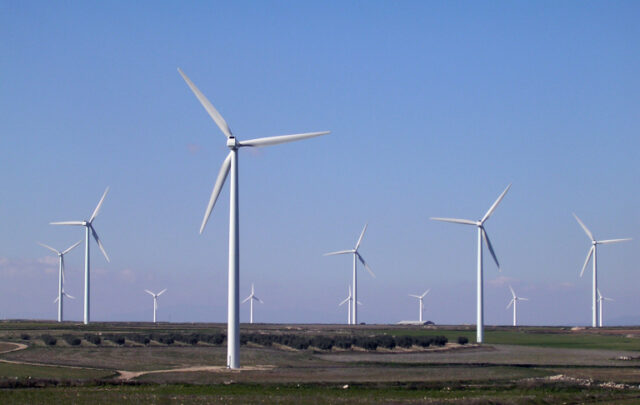New discussion forum initiated by Chevron Corporation, with introductory presentations, discussion papers and moderated forums for subscribed forums (all free).
Below are the texts and references from its ‘Issues in brief’ and ‘Why join us now’ sections. There are seperate papers for discussion forums.
—
Introduction
Fossil fuels currently supply most of the world’s energy, and are expected to continue to do so for the foreseeable future.1 While supplies are currently abundant, they won’t last forever.2 Oil production is in decline in 33 of the 48 largest oil producing countries,3 yet energy demand is increasing around the globe as economies grow and nations develop.4 Abundant energy drives economic development, which in turn creates demand for still more energy.5 But it also puts pressure on supply and impacts the environment. Where does our fuel come from, how is our energy supply and the sources of energy changing, and what can we expect in the future?
Oil and Gas
Oil and gas currently provide more than half of the world’s energy supply, and according to the International Energy Agency, they—along with coal—will continue to be the major sources of energy well into the 21st century.6 OPEC provides about 40% of the world’s oil, although its share is slated to grow. While output of conventional oil and gas from areas like Russia and the Caspian region could rise, North America and the North Sea are expected to decline gradually.7
Over the longer term, where oil and gas are found and in what form will undergo a transformation. Where costs were once prohibitive, energy companies are using new technologies to extract oil and gas from existing reservoirs.8 And offshore technologies are allowing companies to find and extract oil and gas in deep ocean water—a location that was considered inaccessible just a few years ago.9 Fossil fuels also exist in unconventional forms—hydrocarbons contained in oil-sands, and even shale are believed to have more energy content than all the oil in Saudi Arabia.10 The catch is that it may currently take more energy and may cost more to extract and produce oil from some of these unconventional forms than would be gained.
Then there’s natural gas. Getting natural gas to market takes time and investment. But gas is a cleaner source of energy than oil or coal, and emits fewer greenhouse gases.11 And natural gas will only increase in significance. Demand for gas is projected to grow 2.8 % annually through 2025,12 somewhat faster than demand for oil.
Renewables
Renewable sources of energy (biomass, solar, wind, hydro and geothermal) are self-replenishing and clean, and currently contribute 15% of the world’s energy supply.13 Solar power is expanding as technology improves and its cost becomes more competitive.14 Commercial wind turbines are now harnessing energy in over 65 countries, making wind power the world’s fastest growing source of energy after solar.15 And geothermal energy—literally “heat from the earth”—is meeting a significant portion of electrical power demand in several developing countries.16
But each of these sources has its limitations—technologies are still developing and costs are high in many cases. While renewables will continue to play a growing role, they aren’t expected to overtake fossil fuels in the near future in meeting global energy demand.17
Other Alternatives
Nuclear power has its proponents and skeptics, but it may reemerge as a significant source of energy.18 It has been developed extensively in several European countries, and currently provides 75% of France’s electricity.19 While concerns over operating safety and waste disposal linger, some environmentalists and governments find nuclear power appealing because it is relatively clean and emits no greenhouse gases.20
Hydrogen also holds some promise in powering fuel-cell vehicles. The issue is finding sources of pure hydrogen. Currently, the least expensive way of deriving hydrogen is by reforming natural gas, which means we will continue to be reliant on fossil fuels. Another way to produce hydrogen is through electrolysis of water, using electricity or sunlight.21
What’s the challenge?
The challenge for the energy sector is to optimize the development and use of all sources of energy, and drive commercialization of new and emerging sources through successful business—while continuing to meet the world’s growing energy demands efficiently and with minimal environmental impact.
Oil, gas, and coal will continue to be a significant energy source for decades to come.22 But, over time, they will likely share more and more of the market with other sources of energy.23
The sources of energy are changing as energy companies continue to meet the challenge of fulfilling the world’s demand in the near term and well into the future.
—
REFERENCES
1. World Energy Outlook 2004, p. 29.
2. Ibid.
3. Vital Signs, Worldwatch Institute, 2005, p. 30.
4. World Energy Outlook 2004, p. 29.
5. International Energy Outlook, 2004, p 11.
6. Ibid.
7. Ibid.
8. Chevron website
www.chevron.com/technology/core_technologies/.
9. Ibid.
10. USA Today, 9/7/04
www.usatoday.com/money/industries/energy/2004-09-07-oil-sands_x.htm.
11. Naturalgas.org
www.naturalgas.org/environment/naturalgas.asp.
12. International Energy Outlook, 2004.
13. Tomorrow’s Markets, World Resources Institute 2002. p. 25.
14. Wall Street Journal, June 2, 2005
www.seia.org/news/external/WSJJune2_2005.asp.
15. Vital Signs, p. 34.
16. US Newswire, May 16, 2005
press.arrivenet.com/pol/article.php/638535.html.
17. World Energy Outlook 2004, p. 29.
18. International Energy Outlook 2004, World Energy and Economic Outlook, p. 3.
19. www.ambafrance-us.org/intheus/nuclear/n2f2/spring2003.asp.
20. New York Times, May 29, 2005
www.climateark.org/articles/reader.asp?linkid=42280.
21. Energy Information Administration website
www.eia.doe.gov/kids/energyfacts/sources/SecondaryHydrogen.html.
22. World Energy Outlook 2004, p. 29.
23. International Energy Outlook 2004, World Energy and Economic Outlook, p. 2.
—
Why join us now?
Now more than ever we need to work together.
Energy will be one of the defining issues of this century, and one thing is clear: the era of easy oil is over. What we all do next will determine how well we meet the energy needs of the entire world in this century and beyond.
The trends are in motion.
Energy demand is soaring as never before and driving economic growth. And improved standards of living are requiring increasing amounts of energy. In fact, some say that in 20 years the world will consume 40% more oil than it does today.1
The facts are compelling.
Many of the world’s oil and gas fields are maturing.2 And new energy discoveries are mainly occurring in places where resources are difficult to extract—physically, technically, economically, and politically.3 When growing demand meets tighter supplies, the result is more competition for the same resources.
The only energy we have in abundance: Human energyTM.
We can wait until a crisis forces us to do something. Or we can commit to working together, and start by asking the tough questions: How do we meet the energy needs of the developing world and those of industrialized nations? What role will renewables and alternative energies play? What is the best way to protect our environment? How do we accelerate our conservation efforts? Whatever actions we take, we must look not just to next year, but to the next 50 years.
We need your help.
At Chevron, we believe that innovation, collaboration and conservation are the cornerstones on which to build this new world. But we can’t do it alone. Corporations, governments and every citizen of this planet must be part of the solution as surely as they are part of the problem.
And so, we ask you to join us.
Let this website be the vehicle that helps to close the gaps between our diverse philosophies and opens the minds of us all. There are many factors in the new energy equation, and we encourage you to consider all of them. We call upon scientists and educators, politicians and policymakers, environmentalists, leaders of industry and each one of you to be part of reshaping the next era of energy.
Thank you for joining us.
1. www.eia.doe.gov/emeu/international/forecast.html#Forecasts.
2. The Economist
www.economist.com/agenda/displayStory.cfm?story_id=4077933.
3. American Association of Petroleum Geologists website
www.aapg.org/explorer/2005/01jan/discoveries.cfm.





